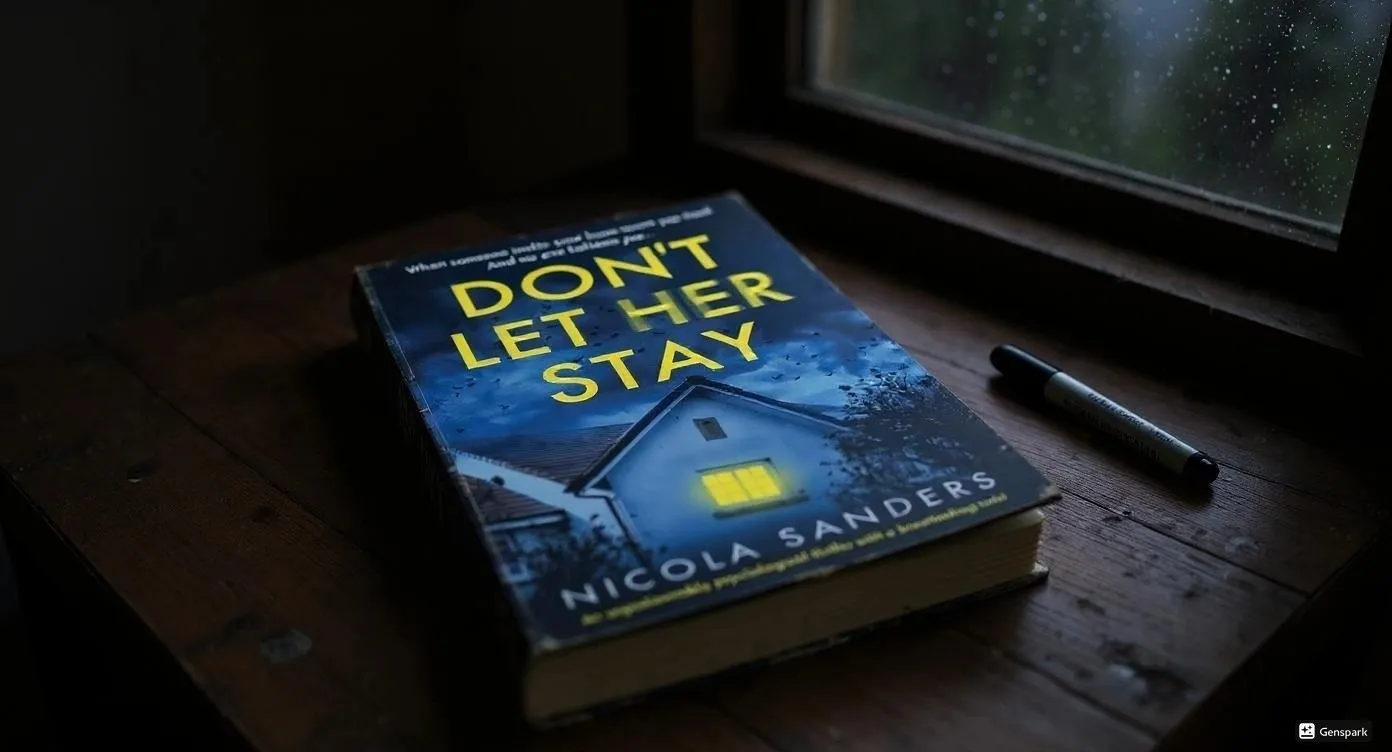I’ll be honest—I read The Phoenix Pencil Company in one weekend. I drank too much coffee and felt very curious about magical pencils. This book grabbed my attention with its mix of historical fiction, fantasy, and a bit of magical realism.
The story moves between two different times. It shows Monica’s search for her family in the present and Meng’s life in 1940s Shanghai. The idea of pencils that keep family memories is amazing. If you like creative stories with emotion, you should read this book.
Dual timelines make the story deep and interesting
Magical pencils connect history, family, and identity
Key Takeaways
The Phoenix Pencil Company mixes history, magic, and family secrets with two timelines.
Magic pencils in the book help people remember things and link family members in a special way.
Monica lives in a world full of technology, but her family has a magical past. This shows how she struggles with who she is.
The book moves slowly and carefully, which lets us see the characters’ feelings and how they change. Big ideas in the story are family memories, heritage, and finding a balance between new technology and old ways.
The story takes place in 1940s Shanghai, which makes it feel real and important. The book is good for people who like magical realism, family stories, and tales that feel old.
It is great for book clubs because it makes people talk about memory, who they are, and family ties.
Verdict
Worth Reading?
I’ll be honest, I started reading The Phoenix Pencil Company on a Friday night and didn’t stop until I finished. My coffee went cold, my phone buzzed with unanswered texts, and I barely noticed the sun coming up. This book pulled me in with its magical pencils and the way it weaves family history into every page. I have to give props to Allison King for creating a story that feels both fresh and familiar.
But is it worth your time? I think so, especially if you love stories that mix history, magic, and family secrets. The dual timelines kept me guessing, and the magical realism added a layer of wonder. Still, I won’t pretend it’s perfect. Sometimes the pacing slowed down, and a few side characters felt a bit thin. The ending left me wanting a little more closure, but maybe that’s just my book obsession talking.
If I had to rate it, I’d give it a 6.5 out of 10. The Phoenix Pencil Company stands out for its creativity and heart, even if it doesn’t hit every note perfectly. It left me thinking about my own family stories and the objects we pass down. That kind of impact is rare.
Note: If you want a book that feels both comforting and a little bit magical, this one delivers.
Who Will Enjoy It
I know not every book is for everyone. Here’s who I think will love this one:
Fans of historical fiction who want something with a twist
Readers who enjoy magical realism but don’t want a full-on fantasy
Anyone who likes intergenerational family stories
People who appreciate a bit of nostalgia and the idea of objects holding memories
Book clubs looking for a novel that sparks conversation about family, identity, and the past
If you like books that make you feel a little nostalgic, a little curious, and maybe even a little teary-eyed, The Phoenix Pencil Company will probably hit the spot. I found myself thinking about my own family’s keepsakes and the stories behind them. That’s the kind of book this is—one that lingers after you turn the last page.
The Phoenix Pencil Company Overview

Plot Summary
When I started The Phoenix Pencil Company, I thought it would be a funny story about magical office things. But it turned out to be much more. The book is about Monica Tsai, a college freshman who likes being alone.
She finds a family secret that changes her life. Monica’s adventure begins with a simple pencil. This pencil holds more than just graphite. It can reawaken memories from long ago. As Monica learns more, she finds out about her grandmother Yun’s hidden life in 1940s Shanghai.
The story mixes Monica’s search for who she is with Yun’s fight to survive during war. The real magic is the family’s skill to “Reforge” pencils. When someone writes with a reforged pencil, old memories come back. This power is not just a cool trick. It helps connect family members and keeps their stories alive.
Setting
The book takes place in two main places. Monica’s world is modern, normal, and sometimes lonely. She lives in the U.S. and feels far from her roots. Yun’s story happens in Shanghai during World War II. The city is full of danger, hope, and history. I could almost smell the ink and hear pencils in the old factory.
Monica’s timeline: Today’s America, college, and her family’s house
Yun’s timeline: 1940s Shanghai, busy streets, and the Phoenix Pencil Company factory
The difference between these places makes the family’s story stronger. The past and present come together. This shows how history shapes us.
Dual Timelines
I really enjoy stories with two timelines, and this book does it well. The Phoenix Pencil Company switches between Monica’s present and Yun’s past. Each chapter gives a new clue. Monica’s chapters feel thoughtful and searching. Yun’s chapters are tense and full of risk. The magic of reforging pencils connects both stories.
The family’s secret power gets the government’s attention, which leads to spying and hard choices.
The story uses letters and memories to link the generations.
It asks who owns family stories and how we share them.
Key takeaways:
Magical pencils bring back lost memories and connect family members over time.
Shanghai’s wartime history makes the story deeper and more exciting.
Dual timelines keep the story interesting and layered.
The Phoenix Pencil Company made me think about my own family’s stories and the things we keep. It is a book that asks, “What would you do to remember—and to be remembered?”
Characters

Monica
Background
Monica is easy to relate to. She is a college freshman. She spends more time on her laptop than with people. I saw myself in her. She is awkward and sometimes feels lost. Monica often hides behind her screen. Here are some things that make
Monica special: She studies computer science and made a social platform called EMBRS. This is important because it shapes how she sees things. Monica is a digital native. She thinks in code. Her diary entries even look like programming scripts. Even with her tech skills, Monica feels alone. She has trouble connecting with classmates and family.
Her family’s magical power to “Reforge” pencils surprises her. It is nothing like the digital world she knows. Monica’s story is about learning to value real connections. The magic makes her step away from screens.
She must face her family’s past. I liked how Monica’s journey felt modern and timeless. She is stuck between technology and tradition. Watching her try to connect both sides made me cheer for her.
Motivations
Monica wants to find answers. She is curious about her family’s secrets. She also wants to belong. At first, she hides behind her coding projects. As the story goes on, she learns that knowing her family’s history helps her know herself. The reforged pencils are more than magical objects. They help Monica heal and connect with her roots.
Tip: If you ever felt like you don’t fit in, Monica’s story will feel familiar.
Meng
Role in Shanghai
Meng’s chapters made me feel the danger and hope. She lives in 1940s Shanghai, a city full of change. Meng is Yun’s cousin. Their bond is the heart of the historical timeline. Meng is strong and never gives up. She faces war, loss, and family secrets.
Here is a quick look at Meng’s importance:
Aspect | Details | Why It Matters |
|---|---|---|
Family Connection | Meng is Yun’s cousin and part of the family’s story. | She makes the story emotional. |
Magical Pencils | Her family owns the Phoenix Pencil Company. They make memory pencils. | This links the past and present. It shows legacy. |
Historical Setting | WWII Shanghai, Japanese occupation, civil war. | This makes Meng’s journey deep and urgent. |
Narrative Impact | The story switches between Meng’s past and Monica’s present. | Meng’s choices affect later generations. |
Emotional Core | Meng and Yun help each other through hard times. | This shows the strength of family bonds. |
Symbolism | The pencils stand for memory, secrets, and healing. | Meng keeps the family’s history alive. |
Family Legacy
Meng’s legacy is about survival and memory. She keeps the family’s magical tradition alive. She does this even when her world falls apart. Her story made me think about strong women in my family. Meng’s courage and loyalty surprised me many times.
Supporting Cast
The supporting characters make the story more colorful. Some are not as developed. Yun, Monica’s grandmother, stands out. She connects the two timelines. She is wise, stubborn, and has many secrets. Monica’s parents and college friends appear. They mostly show Monica’s loneliness. I wish some side characters had bigger roles. The story focuses on Monica and Meng.
Key takeaways:
Monica: Modern, tech-savvy, searching for connection
Meng: Brave, rooted in history, keeper of family memory
Supporting cast: Adds flavor, but the spotlight stays on the main duo
Structure
Narrative Style
I have a soft spot for books that play with how a story gets told. This one uses a dual narrative that switches between Monica’s modern world and Meng’s life in 1940s Shanghai. Each chapter jumps between these two voices. I found myself flipping back and forth, eager to see how the past would echo in the present.
The author uses first-person for Monica and close third-person for Meng. This shift made me feel Monica’s awkwardness and Meng’s quiet strength. Sometimes, I even caught myself rooting for both at once.
The writing style feels intimate and direct. Monica’s chapters read like diary entries or even chat logs. She uses tech lingo and sometimes codes her feelings. Meng’s chapters, on the other hand, feel more poetic and careful.
The contrast works. It shows how different generations tell their stories. I liked how the author used letters, memories, and even pencil sketches to break up the text. These little touches made the story feel alive.
Tip: If you enjoy books that experiment with form—like using emails, letters, or diary entries—you’ll probably love this structure.
What stood out to me:
Dual perspectives keep the story fresh
Modern vs. historical voice adds depth
Creative use of media (letters, sketches, code snippets)
Pacing
I’ll be honest, the pacing here felt like a slow walk through a museum. Sometimes I wanted to race ahead, but the story asked me to slow down and notice the details. The chapters about Monica move at a steady, thoughtful pace. She spends a lot of time thinking, coding, and searching for clues. Meng’s chapters, set during wartime, have more urgency. I felt my heart speed up during tense moments in Shanghai.
Still, the book doesn’t rush. It takes its time building the world and the family’s secrets. Some readers might wish for more action or faster reveals. I didn’t mind the slower parts, but I know not everyone has my patience for quiet, reflective scenes.
Here’s my quick take on the pacing:
Steady and thoughtful in Monica’s chapters
Tense and urgent in Meng’s timeline
Occasional slow spots—especially in the middle
Builds emotional payoff by the end
If you like books that let you linger in the characters’ heads, you’ll appreciate this style. If you need non-stop action, you might get a little restless. For me, the slow burn made the emotional moments hit harder. Sometimes, a story needs space to breathe.
Themes
Family and Memory
I really like stories about family secrets. The Phoenix Pencil Company does this very well. The book feels like searching for lost memories. Monica tries to learn about her family’s past. This made me think about my own family’s old photos. Every time Monica used a reforged pencil, it was like opening a time capsule. I could almost smell old paper and hear the pencil writing.
The story shows how memories can be tied to objects. The pencils are not just tools. They become bridges between generations. The book asks big questions. What do we remember? What do we forget? Who decides which stories last? Sometimes, I felt emotional when Monica found a new memory. These moments felt real and a little magical.
Key points:
Family secrets are important to the story
Memory as magic makes the book special
Objects as bridges link the past and present
If you ever found an old letter or photo and felt nostalgic, you will understand why this theme touched me.
Magic and Technology
I get excited about books that mix magic with modern life. The Phoenix Pencil Company does this in a new way. Monica is a coder. She lives with screens and social media. Her family’s magic uses pencils, paper, and memories. Watching Monica balance these two worlds made me smile. Sometimes, she wants to fix things with code. Other times, she must trust something she cannot explain.
The book does not choose one side. It shows how magic and technology both help people connect. Monica’s app, EMBRS, lets people share memories online. The reforged pencils let people relive memories in person. The story does not say one is better. It asks how both can keep our stories alive.
Why this works:
Magic and tech connect people in different ways
Old and new traditions can work together
Digital and physical memories both matter
I like any book that makes me think about my own use of technology and tradition.
Identity and Heritage
Monica’s struggle with her identity felt very real. She is between two cultures—her American life and her Chinese family history. The Phoenix Pencil Company shows how hard it is to belong. Monica wants to fit in at college. She also wants to honor her family’s past. This struggle made her story feel honest.
The reforged pencils stand for heritage. They hold Monica’s ancestors’ stories. Each time she uses one, she learns more about her roots. The book shows that identity is not just where you live or what language you speak. It is about the stories you carry.
What stood out to me:
Heritage shapes identity in many ways
Belonging is complicated and sometimes messy
Family stories help us know ourselves
If you ever felt caught between two worlds, Monica’s story will feel familiar and maybe even comforting.
Connection Across Generations
I have a soft spot for stories that show how families stay connected, even when years or miles separate them. In this book, the idea of connection across generations feels both magical and real. I found myself thinking about my own family—how a recipe, a letter, or even an old photograph can make me feel close to people I never met. The Phoenix Pencil Company takes this feeling and turns it into something almost tangible.
The reforged pencils act like bridges. When Monica writes with one, she doesn’t just see her grandmother’s memories—she feels them. It’s not just about learning facts from the past. It’s about experiencing emotions, fears, and hopes that shaped her family. That’s what made some scenes so chilling for me. I could almost sense the weight of history pressing down, but also lifting Monica up.
What really struck me was how the book shows that connection isn’t always easy. Sometimes, Monica wants to run from her family’s secrets. Other times, she clings to them. I get that. Family stories can be heavy. They can also be a source of strength. The pencils don’t just reveal happy memories. They show pain, loss, and mistakes. But they also offer healing.
Here’s what I took away about connecting across generations:
Memory is messy: Not every story gets told the same way. Some memories fade, others get passed down like treasures.
Technology and tradition can work together: Monica’s coding skills help her understand her family’s magic. She doesn’t have to choose one or the other.
Healing happens when we face the past: The reforged pencils force Monica to see her family’s truth. It’s not always pretty, but it’s real.
Tip: If you’ve ever wondered what your grandparents were really like, or wished you could ask them questions, this book will hit home.
I loved how the story didn’t pretend that family connections are simple. Sometimes, Monica feels like an outsider in her own family. Sometimes, she feels closer to her ancestors than to her classmates. That tension made her journey feel honest. The Phoenix Pencil Company reminded me that we all carry pieces of our family’s past, whether we want to or not.
Key points to remember:
Magical pencils serve as a symbol for the ways we connect with our roots.
Facing family history can be hard, but it helps us grow.
Generational bonds are complicated, but they matter.
This book left me thinking about the stories I want to pass down. Maybe not with magic pencils, but with honesty and heart.
The Phoenix Pencil Company Themes
Historical Context
I always get pulled in by stories that bring history to life. This book does that with its look at 1940s Shanghai. I could almost hear the city’s busy streets and feel the tension of wartime.
The author paints a world where families try to hold on to hope, even when everything feels uncertain. I found myself thinking about how war changes people and how families pass down stories to help each other survive.
Shanghai during World War II feels real and urgent.
The story shows how families protect their secrets and memories.
I learned about the struggles of living through war, but also about small moments of joy.
The historical setting isn’t just a backdrop. It shapes every choice the characters make. I liked how the past and present timelines fit together, showing how history still affects us today.
Data Privacy
As someone who spends way too much time online, I noticed how the book talks about data privacy. Monica, the main character, builds a social app called EMBRS. She wants to help people share memories, but she also worries about what happens when memories go public. I saw myself in her struggle. Sometimes I want to share everything, but I also want to keep some things private.
Monica’s app raises questions about who owns our stories.
The reforged pencils let people relive memories, but not everyone wants their past revealed.
The book made me think about how technology can both connect and expose us.
I liked that the story didn’t give easy answers. It made me wonder how much of my own life I want to share online. The mix of magic and tech felt fresh and a little chilling at times.
Tip: If you ever worry about what you post online, you’ll find Monica’s journey relatable.
Romance
I have to give props to the author for weaving romance into the story without making it cheesy. The love stories here feel real and sometimes messy. Monica’s journey isn’t just about finding her family—it’s also about opening her heart. The romance doesn’t take over, but it adds warmth and hope.
When I think about other books, I see some fun connections:
Jessie Rosen’s “All the Signs” shows a heroine who grows as she opens up to romance with an old friend. I saw a similar sense of personal change in Monica.
Alexandria Bellefleur’s “Count Your Lucky Stars” explores old flames and the complicated feelings that come with them. The emotional depth in both stories made me root for the characters.
Renée Ahdieh’s “Park Avenue” mixes romance with secrets and tough choices. I noticed how Monica’s love story also deals with family secrets and the push-pull between desire and duty.
The romance in this book isn’t just about butterflies. It’s about trust, growth, and learning to let someone in. I found myself smiling at the sweet moments and feeling a little teary-eyed at the tough ones.
What stood out to me:
Romance supports character growth instead of taking over the plot.
Emotional honesty makes the love stories believable.
Connections to other romantic books add extra layers for readers who love the genre.
Writing Style
Literary Techniques
I notice when writers use language in fun ways. In this book, the author uses clever tricks and real feelings. The style is self-aware and sometimes made me laugh. There are puns, playful words, and even some new words. These things made me think the language was almost a character. I stopped to enjoy funny lines or smart phrases.
The story has allusions to history, myths, and science. I found hints about old legends and famous writers. These details made the story feel deeper. The author does not just tell a story. She wants readers to find hidden surprises in the writing. Sometimes, the story breaks the fourth wall. It feels like the characters know I am reading about them.
What stood out to me:
Playful language and puns
Allusions to history and myth
Self-aware narration that feels personal
If you like books that joke with you, you will enjoy this one.
Imagery
The imagery in this book is strong and sometimes spooky. I could picture the old pencil factory and smell the wood. I almost heard the sound of pencils on paper. The author uses clear images to show memory and feeling trapped. When Monica goes into a memory, her world changes. The writing shows these scenes with sharp, clear words.
I saw how the story uses ideas of being stuck and remembering. Monica sometimes feels trapped in her mind. Other times, she escapes into the past with the magic pencils. These pictures made me think about how memories can help or trap us. The author’s style changes as Monica’s story grows. It goes from busy scenes to quiet, lonely moments.
Imagery highlights:
Memory as a physical place
Motifs of confinement and escape
Sensory details that bring each scene to life
Some parts made me gasp, especially when the writing showed the weight of family secrets.
Dialogue
I like when people in books talk like real people. In this book, the conversations feel real and lively. Monica sounds modern and a little awkward, like a real college student. Sometimes, the dialogue looks like chat logs or diary entries. This made the story feel new. The author uses tricks like talking to an imaginary audience or herself. This made me feel like I was part of the talk.
As the story moves on, the way people talk changes. At first, it is open and social. Later, it gets more private, like Monica is talking to herself. This matches her journey from searching for answers to thinking about what she learned. The difference between talking and writing is shown in smart ways. Sometimes, Monica’s words seem ready to jump off the page and become real speech.
What I liked about the dialogue:
Modern, believable voices
Creative use of chat logs and diary entries
Shifts from open conversation to private reflection
If you ever wanted to be inside a character’s mind, the dialogue here makes it easy.
Critique
Strengths
I have to give props to this book for its creativity. The idea of magical pencils that hold family memories? That’s something I haven’t seen before, and it hooked me right away. I found myself thinking about my own family’s keepsakes and what stories they might hold.
The dual timelines made the story feel rich and layered. I loved jumping between Monica’s modern world and Meng’s life in 1940s Shanghai. Each timeline brought its own mood—one felt quiet and thoughtful, the other tense and full of risk.
Here’s what stood out to me:
Inventive premise: The reforged pencils are a fresh take on magical realism.
Emotional depth: The book explores family, memory, and identity in a way that feels honest.
Strong sense of place: I could almost smell the old pencil factory and hear the busy streets of Shanghai.
Modern voice: Monica’s tech-savvy narration felt real and relatable.
Creative structure: The use of letters, code snippets, and diary entries kept things interesting.
Note: If you like books that make you think about your own family and the objects you treasure, this one will probably hit home.
Drawbacks
To be fair, not everything worked perfectly for me. Sometimes the pacing slowed down so much that I wanted to shake the book and yell, “Get on with it!” Monica spends a lot of time in her own head, which made some chapters feel a bit repetitive. I also noticed that a few side characters faded into the background. I wanted to know more about them, but the story kept its focus tight on Monica and Meng.
Here are a few things that bugged me:
Slow pacing: Some parts dragged, especially in the middle.
Thin supporting cast: I wished for more depth from Monica’s friends and family.
Loose ends: The ending left a few questions hanging. I wanted a bit more closure.
Occasional heavy-handedness: Sometimes the themes felt a little too obvious, like the author wanted to make sure I didn’t miss the point.
If you need a book with non-stop action or lots of twists, you might get restless here. This story asks you to slow down and pay attention to the small moments.
Summary Table:
Strengths | Drawbacks |
|---|---|
Inventive magical premise | Slow pacing in places |
Emotional family themes | Underdeveloped side characters |
Vivid historical setting | Some unresolved plot threads |
Modern, relatable voice | Themes can feel heavy-handed |
I couldn’t put it down at times, but I also found myself wishing for a little more speed and a few more surprises. Still, the heart and originality of the story made it worth the read.
Comparison
Similar Books
I like finding books that remind me of each other. It’s fun when they have magic and family secrets. If you liked the mix of history and magical realism in this book, you might enjoy these too.
The Inheritance of Orquídea Divina by Zoraida Córdova
This book also mixes family legacy with magical realism. The story is about a family with secrets and strange gifts. I thought about it while reading about Monica.The Night Tiger by Yangsze Choo
This story takes place in 1930s Malaysia. It has folklore, mystery, and family bonds. The two timelines and the setting felt familiar. I got chills from how memories and magic come together.Everything I Never Told You by Celeste Ng
This book isn’t magical, but it’s about family secrets and heritage. The honest feelings and focus on what families pass down made me think of Monica and Meng.The Ten Thousand Doors of January by Alix E. Harrow
If you like stories about hidden worlds and special objects, try this one. The writing and sense of wonder reminded me of the magical pencils.
Tip: If you like books with nostalgia, family drama, and a little magic, these are good picks.
Unique Qualities
I read many books with two timelines and family mysteries. But this story is different for a few reasons. The idea of magical pencils that reawaken memories is new to me. I haven’t seen anything like it before. The author uses normal things to connect generations. It feels smart and touching.
Here’s what made this book stand out to me:
Tech meets magic: Monica uses coding and her family’s magic together. They don’t fight. She solves problems with both logic and wonder.
Modern loneliness: The story shows what it’s like to be online but still feel alone. Monica’s trouble with her app and her family’s past felt real.
Sensory writing: Some scenes made me gasp, especially when Monica enters a memory. The writing made history feel heavy and real.
No easy answers: The book doesn’t fix everything at the end. Family can be messy. Memories can hurt. I liked that the story was honest.
Recommendation
Ideal Readers
I like when a book feels made just for me. This one surprised me with its mix of magic, history, and family secrets. If you wonder if this story fits you, here’s who will enjoy it most:
Fans of magical realism who want something new and not too serious
Readers who like family sagas and stories about heritage
Anyone who enjoys nostalgia and objects that hold memories
People who like slower stories and watching characters grow
Those who want to see technology and tradition together in a story
If you like books that make you think about your own family, you’ll probably like this one. I thought about my keepsakes and the stories behind them. That does not happen often.
Tip: If you like to take your time with a story and enjoy the details, this book will feel cozy, like a warm drink on a quiet day.
Sip The Unknown—Discover Stories You Never Knew You’d Love!
Dionysus Reviews Has A Book For Every Mood
Biography & Memoir
Fiction
Mystery & Detective
Nonfiction
Philosophy
Psychology
Romance
Science Fiction & Fantasy
Teens & Young Adult
Thriller & Suspense
Frequently Asked Questions
Is this book more fantasy or historical fiction?
I’d say it’s a blend. The story leans into historical fiction with its Shanghai setting, but the magical pencils add a gentle fantasy twist. If you like both genres, you’ll probably enjoy the mix.
Do I need to know Chinese history to follow the story?
Nope! The author gives enough background for anyone to follow along. I didn’t feel lost at all. The history adds depth, but you don’t need to be an expert to get swept up in the story.
Is the magic system complicated?
Not at all. The magic here feels simple and emotional. The reforged pencils bring back memories—no confusing rules or long explanations. I found it easy to follow and pretty touching.
Will this book make me cry?
It might! I got a little teary-eyed during some family scenes. If you’re sentimental about family or memory, keep tissues nearby. The emotional moments sneak up on you.
Is there a lot of romance?
There’s a bit, but it never takes over. The romance feels real and sweet, not cheesy. It supports Monica’s growth instead of distracting from the main story.
Would this work for a book club?
Absolutely! The themes of family, memory, and identity spark great conversations. I’d even suggest bringing a family keepsake to share. It’s perfect for readers who love to dig into personal stories.
Is it suitable for younger readers?
I think so. The writing is clear, and the themes are thoughtful but not too heavy. I’d hand it to a middle schooler who likes family stories with a hint of magic.
What if I like fast-paced books?
To be fair, this one moves at a slower pace. If you love action-packed stories, you might get a little restless. But if you enjoy character-driven tales, you’ll find a lot to love here.









